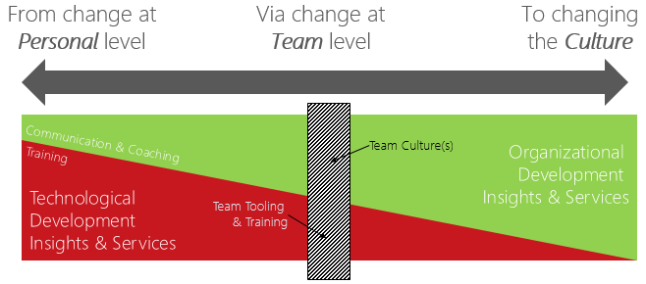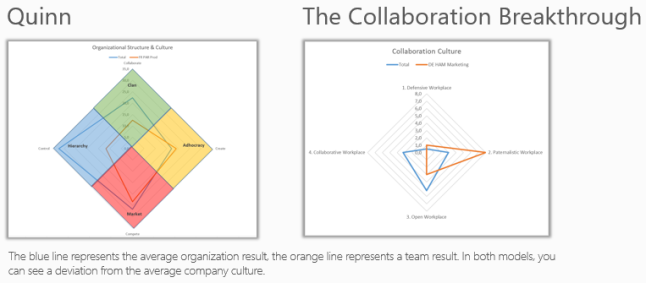With the Left Dimension we look at IT implementations from a different angle. IT people are very good at analysing problems, gathering requirements and setting up systems. But what do they know about the people who are in need of these new solutions, the people who supply the requirements and will be using the new software?
Exactly.
That is the side we focus on with ‘The Left Dimension’: employees who (must) undergo change. And we write about this because it requires attention. Changing old habits is many like writing with your left hand when you are right-handed: it is slower and requires more energy because you are out of your comfort zone.
Concepts such as employee engagement, self-managing teams and bottom-up participation have already proved to benefit the productivity and efficiency of a company. Therefore the additional challenge of change is now more important than ever. According to futurist Gerd Leonhard, in the coming 20 years we will experience more change than in the past 300 years!
Every organisation must have its teams work better together. By introducing better digital cultures of collaboration, they can respond better to change and operate with more customer-orientation.

On one hand you can train employees to achieve a change or on the other hand you can have a cultural shift at organisation level. The Left Dimension focuses on the common ground between these two extremes. The digital transformation that will happen in all organisations requires teams to learn to use modern digital tools and sharpen their IT-technical skills. But not all tools will be welcomed just as readily by all teams. This depends on the culture prevailing within the team: how much trust there is, how ‘open’ the communication is, who takes decisions, etc. We have created a Left Dimension Survey to identify the collaboration culture of a team and take a close look at the whole organisational structure.
This survey is based on two models: The ‘Collaboration Breakthrough’ model and the ‘Competing Values Framework’ from Quinn. The first model includes four possible cultures of collaboration: a defensive culture, a paternalistic culture, an open culture and a collaborative culture, with the latter having the most interaction and collaboration. The Quinn model also includes four possible cultures: a clan culture such as at Google, where a ‘Google-way’ of working prevails; an adhocracy culture, such as at many start-ups and IT companies concentrating on innovative project operation; a market culture, often found at sales departments that are highly target-oriented; and a hierarchical culture such as at McDonalds, where the career development opportunities and regulations are all included in clearly written manuals and procedures.

Each team and company has a certain collaboration culture (Collaboration Breakthrough) and organisation culture and structure (Quinn). The Left Dimension enables us to identify them so we can implement the right tools for a given culture. This means for example that Yammer is not always the appropriate tool in hierarchical and paternalistic cultures. If Yammer is implemented in such organisations, its adoption will be disappointing.
Besides the tools, the Left Dimension also takes account of the method of communicating and how the changes are managed. Communication concerning change in collaborative organisations must be highly interactive, and bottom-up initiatives will be encouraged particularly.
To handle the change process, one must take into account the culture of the organisation and of the teams within your organisation. This is needed to choose the right technological applications and communicate and manage them in the appropriate manner.
If you would like to know more about culture-based change management, don’t hesitate to contact us.

